The York Rite, or more correctly, the American Rite, is based on the early remnants of Craft Masonry that were practiced in the early 1700’s. The formation of the first Grand Lodge of England in 1717 specified that the lodges were to confer only the degrees of Entered Apprentice, Fellowcraft, and Master Mason, all other degrees being considered spurious. However, many lodges had been conferring other degrees that they considered an integral part of Masonry, in particular that of the Royal Arch, and formed their own Grand Lodge in 1751, terming themselves the “Antients” and the other Grand Lodge members the “Moderns.” With the merger of the two Grand Lodges in 1813 into the United Grand Lodge of England, the lodges agreed that only the three accepted degrees of Masonry would be used by the lodges, but the degree of the Royal Arch would be attached to Chapters allied directly to these lodges and bearing the same number as the lodge, though as a separate body. Thus, unlike the Ancient and Accepted Scottish Rite, which claims to hold the power of conferring the first three degrees of Masonry in addition to those under its jurisdiction, those found in the York Rite have rightfully acknowledged the fact that they are considered appendant to those of Ancient Craft Masonry. It is still the practice in English Masonry that a Masonic member is not considered to be in possession of all the degrees of Ancient Craft Masonry until he has been exalted to the Royal Arch.
Early American Lodges operated in a similar manner until the establishment of the General Grand Chapter of Royal Arch Masons. For a period in US history, the Cryptic degrees were controlled by various state Grand Chapter jurisdictions, until the establishment of the General Grand Council. The Chivalric Orders have been controlled by the Grand Encampment since the early 19th century in the United States. All three bodies are technically autonomous Masonic entities, only the requirement of membership in the Royal Arch connecting the Cryptic degrees and Chivalric Orders together.
Appendant to the York Rite Bodies are several additional Masonic bodies, most of which are invitational in nature. Membership in many of them is predicated on membership in the Royal Arch, though some have memberships predicated on other bodies of the York Rite, or membership in all of the York Rite bodies. Many are found in other jurisdictions outside of the United States, but several are uniquely American in their origin.
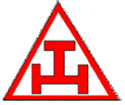
The Capitular Degrees
General Grand Chapter
www.ramint.org
The Capitular Degrees are a set of four degrees controlled by the Royal Arch Chapter. They center on the construction phases of Solomon’s Temple, with the exception of the degree of Past Master, hence the title of Capitular. The degree of Past Master is the vestigial remnant of the former custom that the degree of the Royal Arch could only be conferred on a Past Master of a Symbolic Blue Lodge. In the United States, these degrees are considered as proprietary to the Royal Arch, while in England there is no Past Master degree as found here, and the Mark Master degree is controlled by its own Grand Lodge. The Most Excellent Master degree is also part of the Cryptic Degree in England. As stated in the forward, the Royal Arch overseas is controlled by Chapters attached to English Blue Lodges. The Royal Arch Chapters have occasionally been referred to as the “Red lodge” in older Masonic publications, though they should more accurately be described as the “Red degrees.” In the United States, all Chapter business is conducted in a Royal Arch Chapter, the other bodies being only opened for the conferral of degrees. Some jurisdictions open Mark Master Lodges as “table lodges,” which act as a social focus for the local York Rite bodies

Mark Master
A Degree that emphasizes the lessons of regularity, discipline, and integrity. It is a most impressive Degree centered on the story of the Fellowcraft of the quarry and their role in the building of the Temple. Its importance in English Craft Masonry can be judged by the fact that it operates as a separate Grand Lodge, and is highly sought by members of the Craft in that jurisdiction.

Past Master (Virtual)
A Degree that emphasizes the lesson of harmony. This Degree is conferred because ancient custom required that a Mason must be a Past Master in order to be exalted to the Royal Arch. In some Grand Jurisdictions this Degree is conferred upon all sitting Masters of the Blue Lodge. The Degree confers no actual rank upon the recipient, but is exemplified to maintain the ancient custom.

Most Excellent Master
A Degree that emphasizes the lesson of reverence. This Degree is centered on the dedication of the Temple after its completion, particularly the consecration of the Sanctum Sanctorum and the descent of the Host into the Temple. It is complimentary to the Mark Master Degree and completes the symbolic lessons introduced in that Degree.
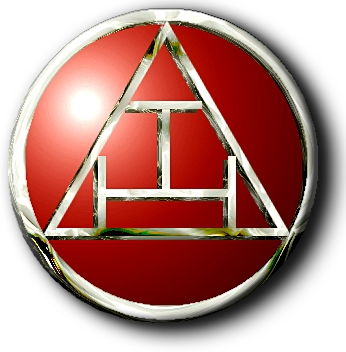
The Royal Arch
The completion of the Master Mason Degree and the summit of the original Degrees of the Blue Lodge as practiced in the Antients Lodges of England before 1820. The Degree explains the origins of the Substitute Word found in the Master Mason Degree, the recovery of the Ineffable Word, and its concealment within the Royal Arch Word. This Degree, together with the Master Mason Degree, may have once been exemplified as one large or “super” Degree, with the Master Mason Degree explaining the loss of the Master’s Word and the Royal Arch explaining the recovery of the Master’s Word. The presiding body is a Chapter, and the presiding officer is a High Priest (titled Excellent).
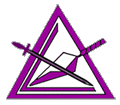
The Cryptic Degrees
General Grand Council
www.ggccmi.org
The Cryptic Degrees are a set of three degrees controlled by the Select Masters Council. The degrees get their name from the reference to a hidden or secret vault in the degrees, hence the term Cryptic. Only the first two degrees are regularly worked, the third degree, that of Super Excellent Master, is worked as an honorary degree, not being required as a requisite for membership in the Council. It is also somewhat peculiar in its association with the Cryptic degrees, as it is more closely allied in theme and character with the Royal Arch and the Illustrious Order of the Red Cross. The history of the body as a whole is also shrouded in uncertainty and controversy. Though there is early evidence of Councils of Royal and Select Masters being worked in the United States, the degrees were worked variously by their own Councils, Royal Arch Chapters, and even Lodges of Perfection of the Ancient and Accepted Scottish Rite. Though the Scottish Rite has long relinquished any claim to these degrees, several Grand Jurisdictions (VA & WVA) still confer them as a part of Capitular Masonry. In England, the degree of Most Excellent Master is grouped with this body. In the United States, all business is conducted in the Select Masters Council, the other two bodies only being opened for the conferral of degrees. Some jurisdictions hold “table councils” in similar manner to “table lodges” as a social focal point of their local York Rite bodies.

Royal Master
A Degree emphasizing the lessons of patience and fortitude. The Degree centers around the Fellowcraft Masons who were artificers fabricating the fittings and furniture of the Temple. It is unusual in that the first part of the Degree depicts events taking place before the death of the Grand Master Hiram Abif, and the last part depicts events occurring after his death.
Select Master
A Degree emphasizing the lessons of devotion and zeal. The Degree centers on the construction and furnishing of a Secret Vault beneath the Sanctum Sanctorum of the Temple, and the deposition of those secrets pertaining to the Craft by the three ancient Grand Masters of the Craft. This Degree bridges the events surrounding the concealment and loss of the Ineffable Word and the events leading to the recover of the Word in the Royal Arch Degree. The presiding body is a Council, and the presiding officer is a Master (titled Illustrious).

Super Excellent Master
A Degree emphasizing the lessons of loyalty and faithfulness. The Degree centers around the events leading to the destruction of Jerusalem and the Temple at the hands of the Chaldeans. The Degree is narrated by small interludes of biblical prophecy that highlight the end of the first Temple and the construction of the second Temple. It is noteworthy for its scenes of the Jewish court of Zedekiah and the Chaldean court of Nebuchadnezzar. This degree is an honorary one, and a member of the Council not needing to have it in order to hold membership or office.
Grand Encampment, KT, USA
The Chivalric Orders are a set of three Orders culminating in the grade of Knight Templar, and controlled by that body. This body is markedly different from its foreign counterparts, in that it exhibits a paramilitary structure and outlook on Masonry, being the only branch of Masonry in the world that is a uniformed body. Its requirement that its members be professed Christians has led to calls of condemnation from other Masonic bodies and organizations both inside and outside the United States, claiming that the body is more of a Christian organization rather than a Masonic body. These have had little effect on the body, however, as many of the organizations criticizing the body have similar degrees among themselves. The American body is also arranged different from its nearest relatives in England. The American body includes the Illustrious Order of the Red Cross, which is not conferred in any other organization, though it has very close cousins in the Irish and American Order of Knight Masons and in the English Allied Masonic Degrees grade of the Red Cross of Babylon. Also, in the United States, the Order of Malta is conferred on members before being eligible to receive the Order of the Temple, whereas in England, the Order of Malta is an honorary grade bestowed on Knights Templar. In the United States, all business is transacted in the Order of the Temple, the other bodies only being opened for the conferral of the Orders. In England, the Order of Malta meets and operates as a separate body in addition to the Order of the Temple.
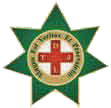
Illustrious Order of the Red Cross
An Order emphasizing the lesson of truth. Elements of this Order were practiced in Ancient Lodges before the final form of the Master Mason Degree came into use. It is still practiced in the full ceremonial form by the Knight Masons of Ireland and the Knight Masons of the United States, and as the Red Cross of Babylon in the English Order of the Allied Masonic Degrees.
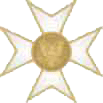
Order of Malta
An Order emphasizing the lesson of faith. This Order requires the Mason to profess and practice the Christian faith. The pass degree of the Mediterranean Pass, or Knight of St. Paul prepares the candidate for the Order by introducing the lesson and example of the unfearing and faithful martyr of Christianity. The Order is centered on allegorical elements of the Knights of Malta, inheritors of the medieval Knights Hospitaller.
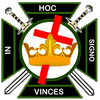
Order of the Temple
An Order emphasizing the lessons of self-sacrifice and reverence. It is meant to rekindle the spirit of the medieval Knights Templar devotion and self-sacrifice to Christianity. The history of the Masonic Order is long and convoluted, with the Order’s ritual differing between that conferred in England and in the United States. That practiced in the United States has a slight militant zeal to the lesson of Christianity, whereas the English ritual is more allegorical. However, the American ritual is most impressive, and more emphasis is placed on the solemnity and reverence associated with the Crucifixion, Resurrection, and Ascension of Jesus Christ. The presiding body is a Commandery, and the presiding officer is a Commander (titled Eminent).
The above information is from www.yorkrite.org
